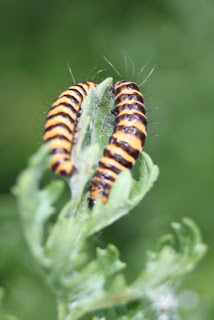There is a great patch of teasels in the open field.
 A close-up (left) shows the intricate spiral structure of their flowering heads. (Click on pictures for enlarged copies.)
A close-up (left) shows the intricate spiral structure of their flowering heads. (Click on pictures for enlarged copies.)The other end of the field contains a large stand of burdock (right). The flowers also have their own complex structure.
Both of these plants are members of the thistle family with their flowering heads consisting of a huge number of tiny florets, each containing all the parts found in larger flowers.

The spear thistle (left) is one of the more common members of the family. They usually grow as single specimens, as was this one, at the end of the footpath by the rams' field.
In contrast, the creeping thistle (right) grows in large thickets. They form a continuous clump all along the side of the same footpath.

But why this one is called a thistle I don't know. It's not prickly, has a completely different flower structure and makes quite a pretty picture. It's a blue sow thistle - an invading species from the Caucasus which has escaped from gardens. There's a lovely patch of them at the lower end of Market Field.
It doesn't even have the thistle-like rosettes of leaves at the base that our common British yellow sow thistles have.
I wonder who it was that decided on the name?



